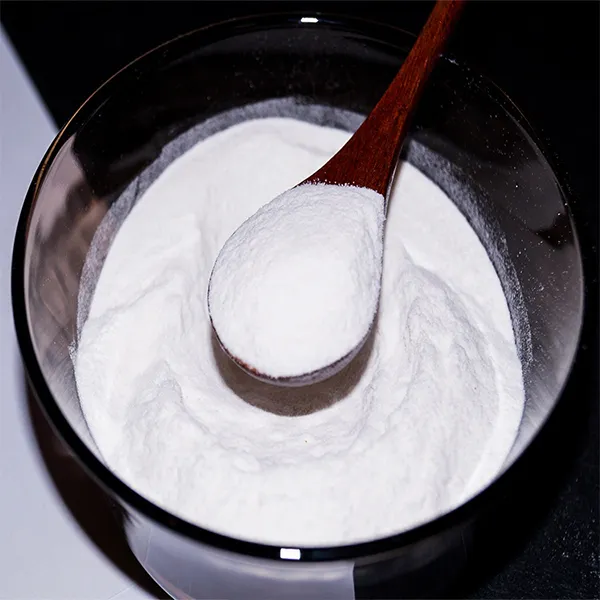Jul . 11, 2024 03:25
Back to list
hpmc hypromellose uses, properties, benefits, and applications in various industries
Hypromellose, also known as hydroxypropyl methylcellulose (HPMC), is a commonly used pharmaceutical ingredient that serves a variety of functions in drug formulations. This versatile polymer has gained popularity in the pharmaceutical industry due to its unique properties and ability to improve the performance of various dosage forms.
One of the key benefits of HPMC is its role as a viscosity modifier. By adjusting the concentration of HPMC in a formulation, the viscosity of the final product can be controlled, which is essential for achieving the desired consistency and flow properties. This is particularly important in the development of oral liquid suspensions, where HPMC helps to prevent sedimentation of solid particles and improve the overall stability of the formulation.
In addition to its viscosity-modifying properties, HPMC also acts as a film-former in tablet coatings. When used in this capacity, HPMC creates a protective barrier around the tablet, which helps to mask the unpleasant taste of certain drugs and prevent them from interacting with the environment. This is especially useful for improving patient compliance and ensuring the efficacy of the medication.
Furthermore, HPMC serves as a mucoadhesive agent in nasal sprays and ophthalmic solutions. By forming a thin film on the mucosal surfaces, HPMC helps to prolong the contact time between the drug and the target tissue, thereby enhancing drug absorption and bioavailability. This is particularly beneficial for drugs that have poor mucosal permeability or are rapidly cleared from the site of administration

hpmc hypromellose. Another important application of HPMC is in sustained-release formulations. By incorporating HPMC into a matrix system, the release of the drug can be controlled over an extended period of time, leading to a more consistent blood concentration profile and reduced dosing frequency. This is advantageous for drugs with a narrow therapeutic window or those that require once-daily dosing to maintain therapeutic effects. Moreover, HPMC is widely used in the production of hydrogel-based drug delivery systems. As a hydrophilic polymer, HPMC has the ability to absorb and retain large amounts of water, making it an ideal candidate for formulating hydrogels that can release drugs in a controlled manner. This technology is particularly promising for the delivery of proteins and peptides, where the stability and bioavailability of the drug are critical considerations. In conclusion, HPMC plays a crucial role in modern pharmaceutical formulations by providing unique functionalities that enhance the performance of drug delivery systems. Its versatility, biocompatibility, and safety make it a valuable ingredient for a wide range of dosage forms, from tablets and capsules to semisolids and liquid formulations. As research advances and new technologies emerge, HPMC is expected to continue to play a key role in the development of innovative drug delivery systems that improve patient outcomes and quality of life.

hpmc hypromellose. Another important application of HPMC is in sustained-release formulations. By incorporating HPMC into a matrix system, the release of the drug can be controlled over an extended period of time, leading to a more consistent blood concentration profile and reduced dosing frequency. This is advantageous for drugs with a narrow therapeutic window or those that require once-daily dosing to maintain therapeutic effects. Moreover, HPMC is widely used in the production of hydrogel-based drug delivery systems. As a hydrophilic polymer, HPMC has the ability to absorb and retain large amounts of water, making it an ideal candidate for formulating hydrogels that can release drugs in a controlled manner. This technology is particularly promising for the delivery of proteins and peptides, where the stability and bioavailability of the drug are critical considerations. In conclusion, HPMC plays a crucial role in modern pharmaceutical formulations by providing unique functionalities that enhance the performance of drug delivery systems. Its versatility, biocompatibility, and safety make it a valuable ingredient for a wide range of dosage forms, from tablets and capsules to semisolids and liquid formulations. As research advances and new technologies emerge, HPMC is expected to continue to play a key role in the development of innovative drug delivery systems that improve patient outcomes and quality of life.
Latest news
-
Rdp Powder: Key Considerations for Wholesalers in the Building Materials IndustryNewsJul.08,2025
-
Key Considerations for Wholesalers: Navigating the World of Hpmc - Based ProductsNewsJul.08,2025
-
Hpmc Detergent: Key Considerations for WholesalersNewsJul.08,2025
-
Key Considerations for Wholesalers: China Hpmc For Tile Adhesive, Coating Additives, Concrete Additives, and MoreNewsJul.08,2025
-
Crucial Considerations for Wholesalers: Navigating the World of Construction MaterialsNewsJul.08,2025
-
Key Considerations for Wholesalers Sourcing Additive For Cement, Additive For Concrete, Additive For Putty from Additive Manufacturer Shijiazhuang Gaocheng District Yongfeng Cellulose Co., Ltd.NewsJul.08,2025




